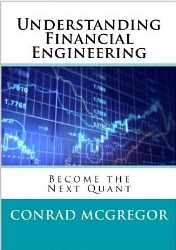Jeffrey Rosenberg, the Head of Global Credit Strategy for Banc of America Securities, presented his broad thoughts on the economy which I would like to share. He is a very articulate and well thought out individual so I do believe he received his rather high position out of merit.
He presented a piece called “A Rolling Loan Gathers No Loss” – he likes to make references to old lyrics in songs, but this statement refers to the fact that many bondholders are “kicking the can down the street” as in they are postponing defaults into the future because recovery rates on bonds have been near zero this year mostly due to a lack of DIP (Debtor in Possession Financing) because CIT Group and GE Capital are the big players in that arena and are both on their death beds. So instead of having a default with recovery of zero today they are putting more money into the pot and hoping that 2-3 years from now they can have a default with 50% recovery.
Basic Sobering takeaways from his presentation:
- The printing press that the fed put into action has helped to re-inflate the risk taking market. This is not a fundamentally driven rally but a technically driven rally. The low interest rates have actually fueled a revitalization in the structured market in which they take a whole bunch of crappy loans, repackage them (RE-REMIC), so that banks and insurance companies can buy a top slice of these crappy loans at a high yield with a guaranteed AAA rating (this is exactly what got us into the credit mess)
- He believes that the money that the Fed has put into the market is not easily pulled out. A lot of the smaller chunks the fed can withdraw quickly (AIG, Discount window, Maiden Lane, CPFF, Treasuries) but the vast majority of liquidity that the fed has put in the market is related to TALF and the purchase of MBS (residential mortgages). TALF will wind down, but the MBS that the fed bought were bought at PAR ($100) value. The only way that the fed can pull the money out of the system is by selling the mortgages back to investors (fed takes in cash, gets rid of securities). If mortgage rates increase to say 6% or above (which has to be the case) then the fed will have to sell these mortgages at a loss because they were all written at 4-5 – 5.5%. That loss can only be absorbed by taxpayers if taken all at once, so the FED would effectively be taxing the US Citizen. Of course congress would not be at all happy about it so luckily they haven’t figured that out yet. That being the case, the Fed cannot quickly pull this money supply, so Rosenberg believes that inflation is the only way out.
- He believes that our economy will not have a Japan-like deflationary scenario because unlike Japan, we are entirely funded by external sources for our government debt. The marginal foreign buyer is the determining factor in our interest rates whereas Japan had plenty of internal demand. This follows through to inflation and high interest rates.
- There is a large pool of bank loans that will mature and need to be refinanced in 2011. 50% of the bank loan market used to be financed by CLO’s (Collateralized Loan Obligations). That funding facility no longer exists so $600 B will have to be refinanced elsewhere.
- Rosenberg believes that unless massive regulation forces banks to hold a lot more capital (which hasn’t been the case so far and opposite the case for Goldman Sachs) then they will basically re-inflate this bubble which will most likely be the last (meaning massive currency devaluation and high interest rates). First came the tech bubble, then came the housing bubble, then the credit bubble, then the commodity bubble….all because of cheap money.
The only positive note that Rosenberg left us with was that he does believe that the consumer can help the economy out of the quagmire. He points to demographic exposures, showing that the top 10% on the wealth distribution chart did not take their lumps as badly because of the housing crisis. He then points out that the top 10% of American consumes 42% of all goods. Unfortunately, congress is more likely going to redistribute wealth from the top 10% to the middle and bottom half which will merely plug their balance sheets versus restarting the economy.



